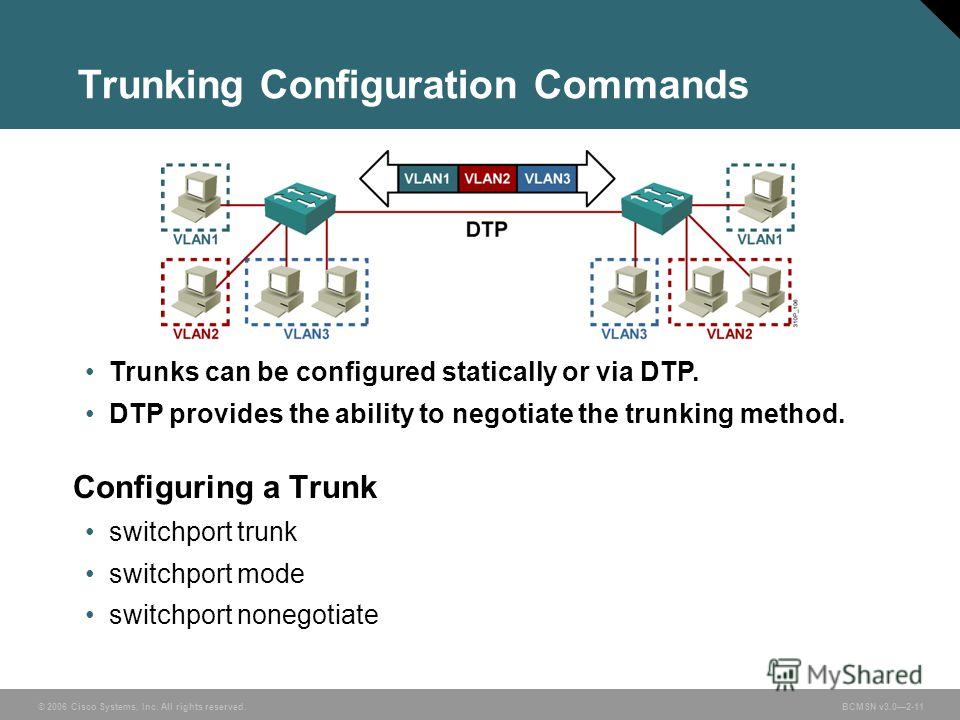by Mike | Apr 21, 2017 | Uncategorized |
Many people have trouble understanding cisco’s native vlan idea. Actually, it is very simple.
Let’s start with statement, that the native VLAN has two functions:
- It tags incoming untagged frames on trunk links with the native VLAN.
- It untags outgoing frames that has already been tagged with same VLAN that is being used for the native VLAN on the trunk.
(more…)

by Mike | Mar 30, 2017 | Uncategorized |
Originaly it was posted by Brad Hedlund.
It always helps me to think of the English translation when trying to memorize and understand some the Cisco IOS settings I think are important.
Here are some Cisco IOS switchport configurations translated into English:
switchport mode trunk says: “Always trunk on this end, and I will send DTP to attempt to negotiate a trunk on the other end.”
switchport nonegotiate says: “Do not send or respond to DTP from this end. Disable all DTP on this port.” (Best used on user access ports, when trunking to non-Cisco switches, when trunking to a router[1], or if you are paranoid about fast convergence[2])
switchport mode dynamic desirable says: “Ask the other end to trunk using DTP and trunk if the negotiation succeeds. If DTP negotiation fails then become an access port.”
switchport mode dynamic auto says: “If the other end asks me to be a trunk with DTP, then become a trunk, but I wont initiate any negotitation from this end. If no one asks me to become a trunk then I will become an access port.”
switchport mode access says: “Never trunk on this end, and I will send out DTP to help my link partner reach the same conclusion.”
switchport trunk encapsulation says: “Do not negotiate the trunk protocol with DTP. Only use the trunk protocol specified in this command (isl or dot1q).
[1] Cisco routers do not talk DTP
[2] The process of DTP message exchange adds some delay in negotiating and bringing up a trunk. Use ‘switchport mode trunk’ + ‘switchport nonegotiate’ + ‘switchport trunk encapsulation’ for the fastest possible formation of a trunk.
